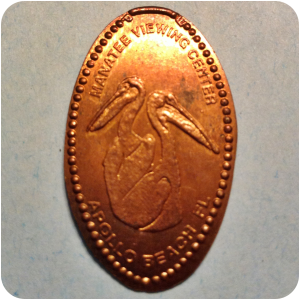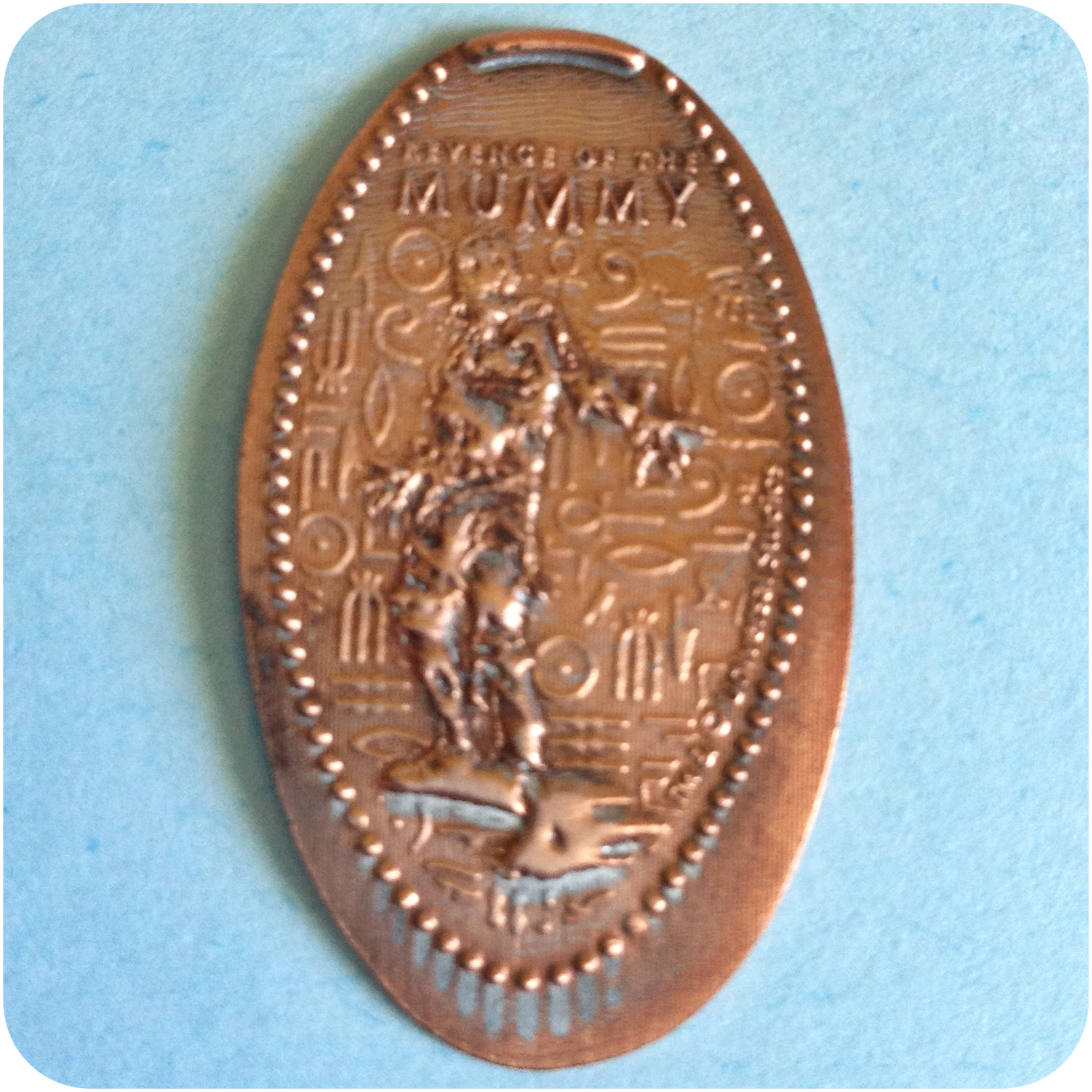Description
This circulated coin is cleaned, shows wear and tear and is pressed on a copper-plated zinc penny.
This nature area is operated by the Tampa electric utility,1 and is located about 10 miles south of Tampa on the Gulf of Mexico. Admission and parking are free. The center is open daily from 10 a.m.-5 p.m., November 1st through April 15th (closed on major holidays). The machine is outside, downstairs on the path on the way to the Manatee viewing. This location has 2 Moldarama machines, also.
All designs say Manatee Viewing Center Apollo Beach FL. and are:
- Manatee
- 2 Pelicans
- 2 Manatees
- a Snook (Fish)
Big Bend Power Station in Apollo Beach delivered reliable electricity to the community for 16 years before the commercial operation of Big Bend Unit 4 in 1986. That year, people started seeing manatees in large numbers in the power station’s discharge canal, where saltwater – taken from Tampa Bay to cool Unit 4 – flowed, clean and warm, back to the bay. When Tampa Bay reached 68 degrees or colder, the mammals would seek out this new refuge. The Manatee Viewing Center2 was soon born. Today, Big Bend’s discharge canal is a state and federally designated manatee sanctuary that provides critical protection from the cold for these unique, gentle animals.
Pelicans3 are a genus of large water birds comprising the family Pelecanidae. They are characterised by a long beak and large throat pouch used in catching prey and draining water from the scooped up contents before swallowing. They have predominantly pale plumage, the exceptions being the Brown and Peruvian Pelicans. The bills, pouches and bare facial skin of all species become brightly coloured before the breeding season. The eight living pelican species have a patchy global distribution, ranging latitudinally from the tropics to the temperate zone, though they are absent from interior South America as well as from polar regions and the open ocean. Fossil evidence of pelicans dates back at least 30 million years, to the remains of a beak very similar to that of modern species recovered from Oligocene strata in France.
Source: PennyCollector.com ↩
Source: TampaElectric.com ↩
Source: Wikipedia.org ↩









Reviews
There are no reviews yet.